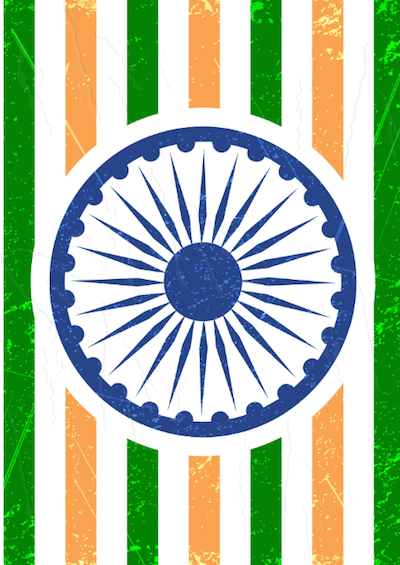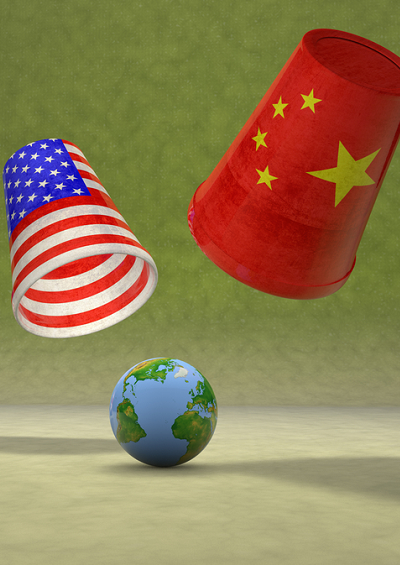India: Maneuvering Among China, the US, Europe and Russia
Prime Minister Modi faces a real foreign policy “trilemma.”
May 17, 2015

India’s bland foreign policy has traditionally been based on the principle of “please all and offend none” with respect to the great powers and “ignore” the rest. Things changed under Indira Gandhi when India pivoted to the Soviets and teamed up with them against the “capitalists” in the West.
In the post-1990 era, once the Soviet Union disappeared, India reverted to the “offend none” tactic. That approach suited the soft-spoken Prime Minister Manmohan Singh quite well.
Things have changed since then. Prime Minister Narendra Modi, in office since late May 2014, is a muscular and energetic man. He wants his foreign policy to reflect that energy and purpose. But Mr. Modi faces the classic problem of managing an “impossible trinity” — an emerging China, the United States and a weakening Russia.
China today attracts allegiance from countries cutting across traditional power blocs. East Asia, including the often truculent Vietnam and Australia, feed off China’s economic growth. China’s GDP will rise by $6 trillion in the period from 2015-24. For East Asian nations, this is a powerful magnet that dulls the pain of negotiating with China over “disputed territory” in the South and East China Sea.
Similarly, Sub-Saharan Africa increasingly depends on Chinese investment “aid” and mineral exports to China. Even Russia prefers to diversify its energy exports away from Europe to China — but not to India or Japan.
Good fences make good neighbors
China is an immediate neighbor of India. A dispute over border demarcation in the west and east lingers. Neither party is really willing to resolve it.
For China, the ongoing border dispute presents it with an opportunity to build roads through Pakistan-occupied Kashmir (PoK). Beijing can thus link into Karachi on the Arabian Sea and the still-to-be-built Chinese port of Gwadar in Baluchistan province, next to the Iranian border.
For India, the border dispute — in particular, China’s crafty moves to build infrastructure through PoK (with Pakistan’s support) — also serves to legitimize a tit-for-tat aggressive development of Arunachal Pradesh, a border territory claimed by China. The area has significant hydropower potential, estimated at around 30 gigawatts. In addition, it is of strategic importance to safeguard the northeastern states of India to its south.
It is fashionable to cast India’s need for China in commercial terms — trade and investment. But China is a much more efficient manufacturer than India. That, in effect, makes India the junior exporting partner, as evidenced by a trade deficit of $40 billion, or more than one half of bilateral trade. This is also evidence of China’s relative competitiveness, although Indian exporters cry foul about informal barriers to imports.
Seeking investment from China is one way of plugging the hole created by the trade deficit. This offers a great business opportunity for China.
India’s growth story, while not as impressive as China’s, is sufficiently dramatic in these economically hollow times to have caught global attention.
From the Chinese perspective, growing economic ties with India — soon to be the fourth-largest economy in the world (after the United States, China and Japan) — enhance China’s “strategic prestige.” This is the “pull” factor.
There is also a “push factor,” which Indian strategists tend to pay great attention to — that is, China’s latent paranoia that India may become part of a U.S. effort to encircle China, along with Japan.
India: A link in a chain to contain China?
In my view, this “fear factor” is exaggerated. China knows full well that the Indian psyche favors reconciliation rather than confrontation. India routinely prefers turning a blind eye to occasional intransigence, even though it abhors subjugating its sovereignty to any foreign influence — a legacy of its colonial mindset. Either way, India could never be a subaltern link in an American chain to “contain” China.
China is remarkably unconcerned about future competition from the United States. Over the next 30 years, the United States has to contend with four big challenges that will reduce that nation’s strategic heft in the global arena. The United States will:
1. Morph demographically into being dominated by fast-growing Hispanic and African-American communities.
2. Deal with an aging, minority white population.
3. Cope with the inherited disadvantage of high wages and even higher citizen expectations.
4. Face up to a degrading infrastructure and increasing inequality.
What this will mean for the “can do” spirit and mojo which define the United States is unclear. Of course, other nations -– including China — face significant challenges of their own. But China does not have to contend with the downside of participative democracy — long lead times in decision making.
Despite such uncertainties, the United States remains a long-term natural ally of India. Its pluralistic culture, democratic values, federal institutional arrangements, history of innovation, and well-grounded belief in religion and the “family first” mantra fit in well with India’s characteristics.
A weakening United States and a strengthening India make a perfect combination.
How to deal with China? Despite all the hype about the latter country, the combined GDP of the United States, India and Japan will be double China’s GDP in 2024. That sheer economic size attracts allies around the globe.
Knowledge of this reality is reflected in the determined efforts of Mr. Modi to establish India as a trade, investment and communication bridgehead with the United States, Japan, Germany and Australia.
The toothless bear plagued by a weak economy
The traditional third leg of the India’s foreign policy trinity has been Russia. But the gains from trade or strategic alignment with that country are scarce. A close strategic friendship with Russia elicits no apprehension in Beijing. Russia is viewed there today as a “toothless bear” plagued by an overly natural resource-export dependent economy.
Russia, ruled by oligarchs, has to reform and shed its macho image. Its best bet is to integrate into Europe, where it belongs. Consequently, the “real” third leg of the trinity in India’s future is Europe, with Germany and Russia as possible focal points.
Mr. Modi’s strategy to navigate the impossible trinity of the United States, China and Europe-Russia is clear. It has three core elements:
1. Engage with the United States, Japan and Germany aggressively and integrate into their value chains.
2. Keep expectations low but exchange lofty targets with the Chinese and the Russians.
3. Most important, gear up India’s economy.
India’s best friend for the future clearly is its own strength and resilience.
Editor’s Note: This feature was adapted from an earlier version that appeared in Asian Age.
Takeaways
A weakening United States and a strengthening India make a perfect combination.
India could never be a link in an American chain to contain China.
China is unconcerned about future competition from the United States.
Russia has to reform and shed its macho image. Its best bet is to integrate into Europe.
